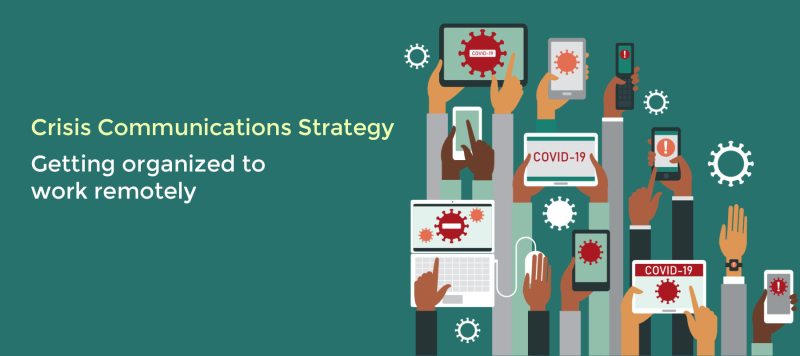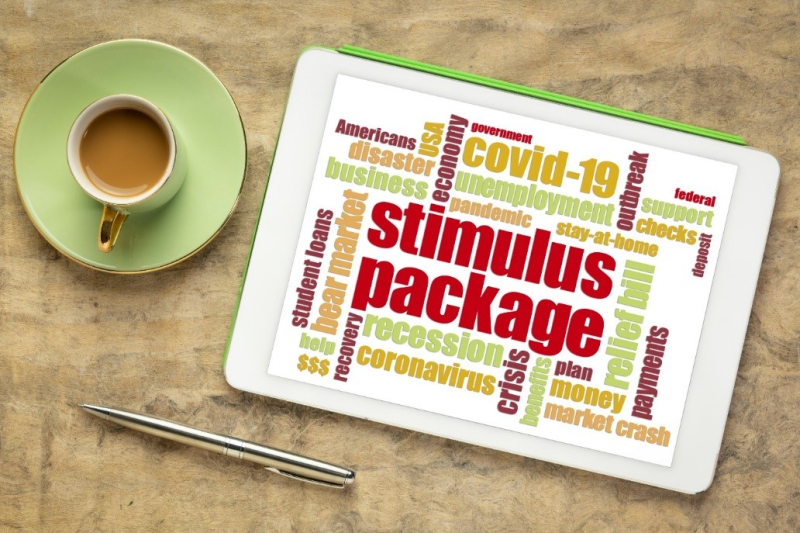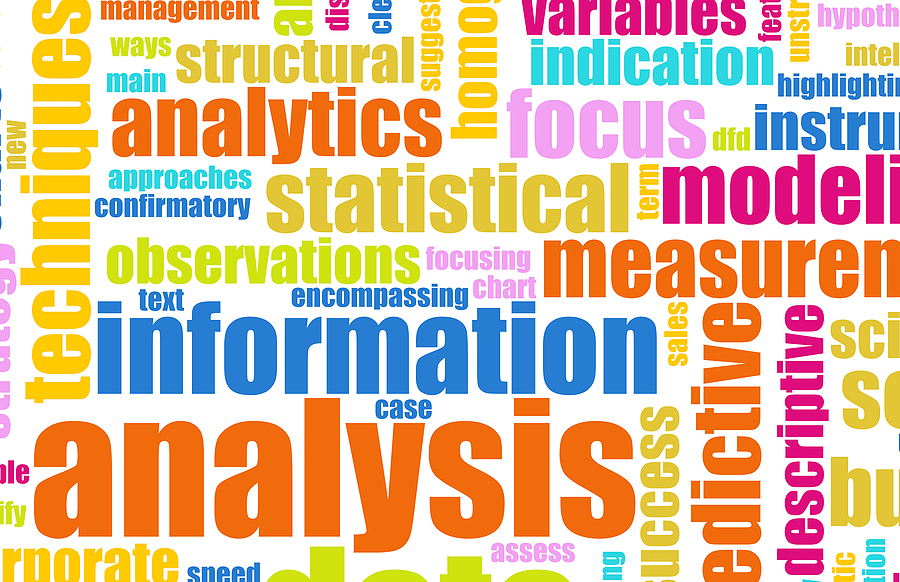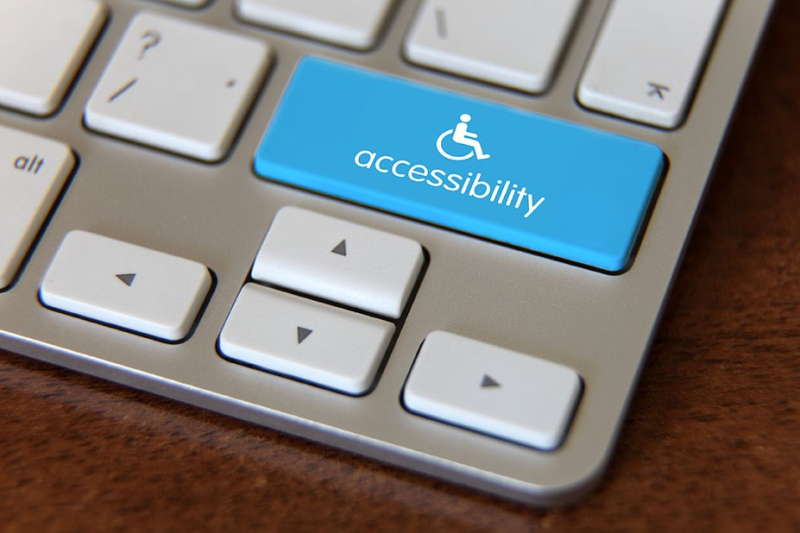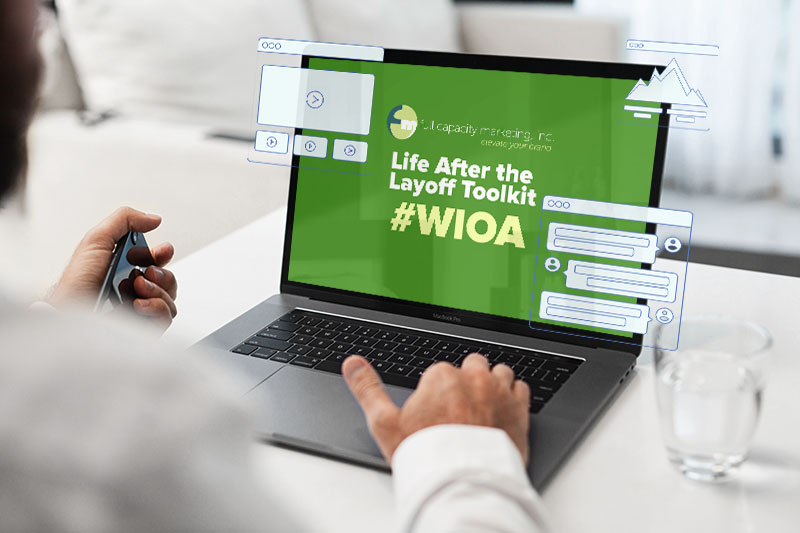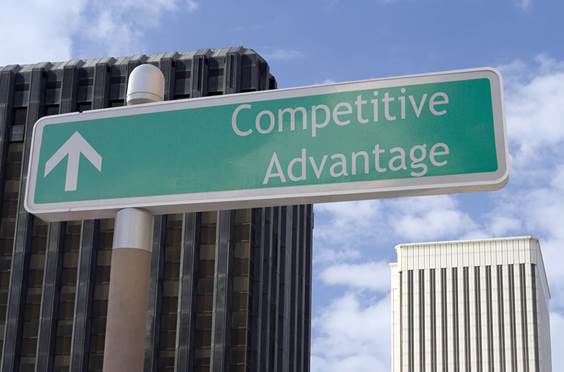Tag: workforce

Crisis Communications Strategy
With increasing self-isolation in response to COVID-19, a virtual team model is coming to the forefront for many workforce and education organizations that are accustomed to onsite service delivery for students, job seekers and employers.
With increasing self-isolation in response to COVID-19, a virtual team model is coming to the forefront for many workforce and education organizations that are accustomed to onsite service delivery for students, job seekers and employers. Here at FCM, we’ve operated using a virtual business model for 18 years, so we are lending our expertise to support workforce and education organizations with crisis communications planning and designing operational structures to maintain efficient communication both internally and with the public.
Here are strategies to keep communication relevant among your virtual staff:
- Identify technology platforms. Working from home, or some other remote location, means you will have to use platforms that help your workforce and education staff communicate in real time; plan to meet virtually with your team and customers/clients; manage projects online; and continue communicating regularly with your customers/clients. You may have other needs, so it’s best to start by making a list your team’s daily activities. Then, match the activities to the most appropriate platforms to make working remotely as smooth as possible for everyone involved. Email us for a pro bono consult about technology with FCM’s CEO.
- Schedule Monday morning meet-up. Using platforms like Zoom and GoToMeeting with webcams, keep regularly scheduled staff meetings every Monday morning to establish team priorities and identify team member roles. During this time when students are switching to online learning and workers are being laid off, discuss operational and communication bottlenecks and devise a cross-training plan to address areas of critical importance.
- Keep consistent business schedules. Nothing has changed in terms of servicing your customers with the huge exception that you now have to move to an online business model that requires even tighter communication protocols. Create a schedule of handling customer inquiries, assigned staff and the methodology for communication (e.g. hotline, text, email).
- Create communication protocols. It is critical to have individual team leads responsible for monitoring emails, social media and texts from customers. These leads need to have access to the people within your organization who can answer questions they on their own may not know how to answer. So it’s important that leads be in regular contact with your organization’s subject-matter experts to ensure information is accurate and timely—platforms like Slack can help with real-time internal team communications to alleviate email backlogs.
- Develop a Crisis Communications Plan (CCP). A CCP is an operational blueprint for how your organization plans to communicate to employees, stakeholders and the public you serve. FCM has created a template for what to consider when creating this plan. You may also schedule a pro bono consult with FCM’s CEO to discuss.
Share this article

Thought Leaders in Workforce, Education & Entrepreneurship

WORKFORCE AND EDUCATION ADVOCACY STRATEGIES IN THE COVID-19 ENVIRONMENT
Workforce and education organizations, like those in other sectors, have been hard hit by the coronavirus. They are scrambling to figure out virtual service delivery, new operational models and staff safety measures.
Workforce and education organizations, like those in other sectors, have been hard hit by the coronavirus. They are scrambling to figure out virtual service delivery, new operational models and staff safety measures. In the midst of this, they are also acutely in tune with any new legislation and funding trends pertaining to COVID-19 that may help support their mission.
For example, there’s the Relaunching America’s Workforce Act which proposes funding existing workforce development programs at the local level; the 650+ funders distributing more than 3,000 grants to those missions affected by the coronavirus; and state responses to appropriate additional funding for coronavirus-related tasks.
Policymakers and foundations are making quick decisions about which organizations to fund, and while workforce and education may seem like obvious choices, COVID-19 has affected many missions, including healthcare, poverty, food security and a myriad of others, all vying for funding.
However, these mission-focused organizations are not positive about what the future holds for funding. In a survey of nearly 550 nonprofits in 93 countries, conducted March 24-26, 96.5% of respondents reported negative impacts related to the virus, including a drop in contributions (67.9%). Among all respondents, 41% anticipate a drop in funding of at least 21% over the next 12 months; 18% expect to see a decline of between 16%-20%; and 12% anticipate a decline of between 11%-15%. Only 3% expect to see an increase in revenue.
The competition for funding will become even greater, which is why your workforce or education organization must take steps to clearly communicate the value of your mission to stay top of mind with policy makers and funders.
Best Practices: Advocacy & Communication
Advocate through virtual meetups with policymakers and funders
In this time of social distancing, organizations have had to execute advocacy strategies via a virtual format instead of conducting the usual face-to-face relationship-building activities. Sharon Bonney, executive director of the Coalition on Adult Basic Education, wasted no time shifting the national organization’s normal Capitol Hill Day to a virtual format in April, followed by an Advocacy April campaign. Prepping the 109 participants via webinar, Bonney said, “Those who had previously participated in our in-person Capitol Hill Day noted several advantages of going virtual outside of the obvious ones relating to work and travel. Many said they had an easier time getting in touch with legislators and staffers than they have for in-person meetings and noticed a more engaged focus during the meetings. The virtual format allowed a wider group to participate, including adult learners and teachers.”
COABE had more than 12,000 touches with policy makers via virtual meetings, phone calls and emails for their three particular asks:
- $692M for Workforce Innovation & Opportunity Act funding
- $1B related specifically with COVID-19
- A portion of the stimulus funding that has been pushed to governors through the Emergency Education Relief funding
Pay attention to how policymakers and funders communicate virtually.
Tag and follow relevant policymakers and funders who are active on Twitter, LinkedIn and Facebook to push advocacy messages. A campaign that caught FCM’s attention using this approach is the Malaria No More’s Stop the Buzz campaign, which uses an augmented reality filter to encourage social media users to literally use their voices to help end malaria prior to the United Nations General Assembly and the Global Fund replenishment.
Build your list of Twitter handles for U.S. Senators, U.S. House of Representatives and local elected officials. Once logged into Twitter, you can find a list of handles for U.S. senators here, and another for members of the U.S. House of Representatives here. The National Conference of State Legislatures provides a list of state legislative social media websites.
Communicate your organization’s proactive response to COVID-19.
It’s critical to proactively inform your customers, partners and funders about the operational changes you have made or are making in response to COVID-19. A best practice is to add a section to your website that is designated to COVID-19 information and to segment the information by audience (e.g., employers, jobseekers, students) to make it easier for your website visitors to navigate. Draw visitors to the new section of your site by adding across the top of your homepage a colorful banner that links to the new COVID-19 section of the website (see image of Full Capacity Marketing webpage below for example).
FCM helped the Workforce Development Board of Contra Costa County create a designated COVID-19 section on its website in April, when it launched BounceBackContraCosta.org. This approach helped WDBCCC move important on-site workshops – workshops that are required for the organization to qualify for federal Workforce Innovation & Opportunity Act funding – online when in-person workshops were no longer possible because of social distancing. The WIOA training video is now easily accessible online, and soon will be joined by other instructional videos, including one on resume-writing and another related the state’s job board.
A dedicated campaign paid off for the Workforce Development Board of Contra Costa. The new COVID-19 microsite launched in April, putting total impressions across Twitter, LinkedIn and Facebook at 11,600 – up 22,741% from the prior month! WDBCCC gained about 40 new followers across all of its platforms within 30 days.
Track and promote the positive impacts of any COVID-19 funding received by your organization.
As part of your dedicated campaign, include information about how the organization is utilizing any COVID-19-specific funding to rebuild the lives of those most affected. Translate the outcomes of the funding into a simple scorecard to place on your microsite. The scorecard could include highlighting the number of people served, types of services provided and results of the services.
Proactively push legislators and funders to the scorecard through social media and e-newsletters; they need to see the results of the funding and the positive impacts occurring within your community.
Provide a platform for your customers to share how your organization has helped them recover.
Feature the people and companies your organization serves on your campaign microsite, showcasing how your organization helped them recover from the financial impacts of COVID-19. FCM’s national workforce campaign developed for the National Association of Workforce Boards has been in existence since 2011 as an ongoing platform to share the stories, innovations and successes of the workforce development system.
This model can be replicated on your campaign microsite to highlight your customer successes. Let them tell their stories in writing or via video, which is preferred. Use Skype or Zoom to record them sharing their story. This format allows you to capture the emotion associated with overcoming COVID-19 obstacles thanks to the services your organization was able to provide as a result of new funding. Post the videos on your campaign microsite and on your YouTube channel. Share them on your social channels and be sure to tag the funder whose funding helped the customer.
Full Capacity Marketing can help you with your virtual advocacy efforts during this time of COVID-19. Check out our available services and schedule a consult with our CEO.
Like this article?
If you like this article we recommend downloading our eBook below to get better informed
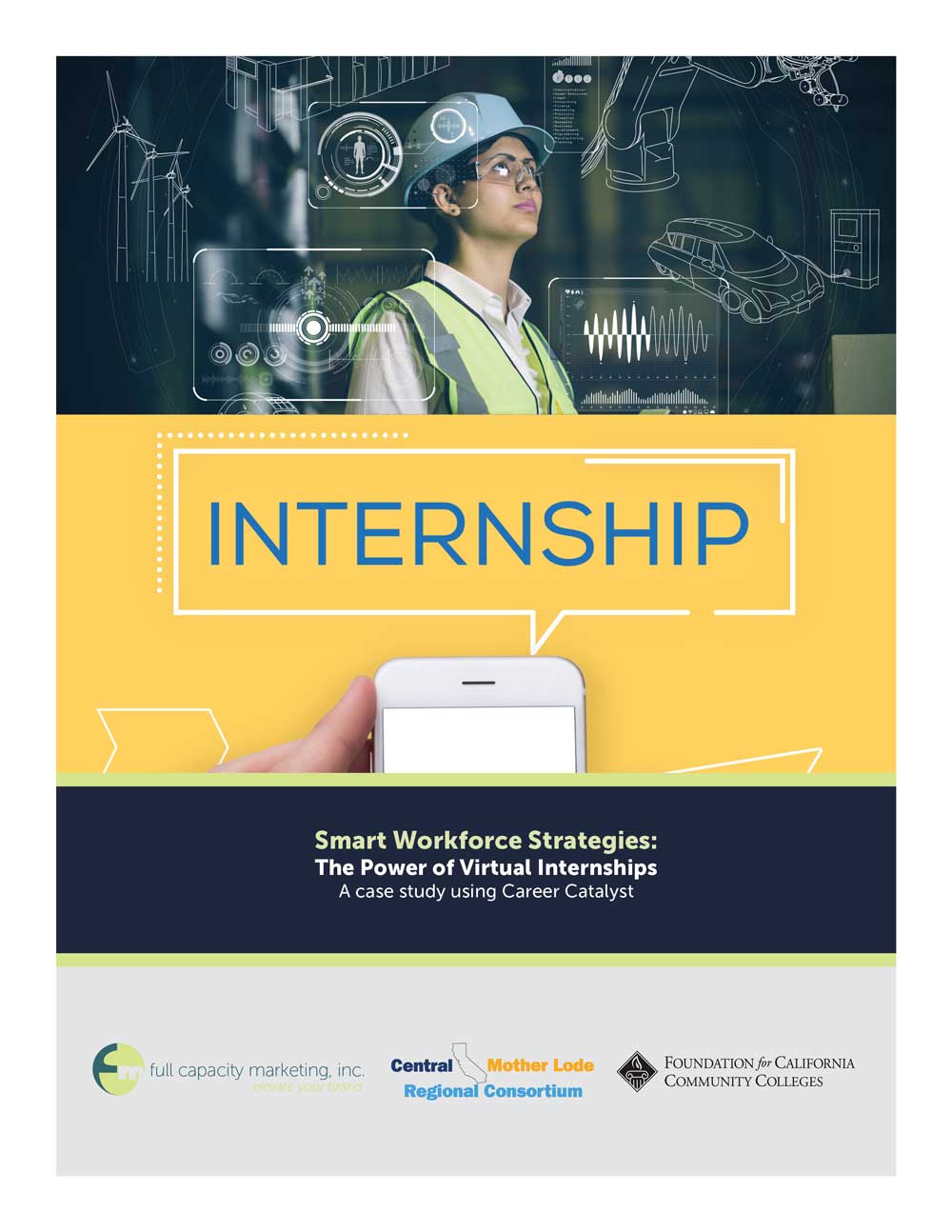
Smart Workforce Strategies:
The Power of Virtual Internships A case study using Career Catalyst
Share this article

Thought Leaders in Workforce, Education & Entrepreneurship

ARE YOU READY FOR YOUR MONITORS’ ADA-COMPLIANCE WEBSITE CHECK?
If you’re an organization funded by the Workforce Innovation and Opportunity Act (WIOA), you are likely gearing up for visits from Department of Labor monitors who will determine whether you are in compliance with the American With Disabilities Act (ADA).
If you’re an organization funded by the Workforce Innovation and Opportunity Act (WIOA), you are likely gearing up for visits from Department of Labor monitors who will determine whether you are in compliance with the American With Disabilities Act (ADA). Striving to eliminate the digital divide for individuals with disabilities, ADA applies to everything from website design and content, including videos and PDFs, to e-newsletters and other content published for public consumption.
Here are some other benefits of ADA compliance:
- Improves your search-engine presence – With limited budgets, workforce organizations often can’t afford paid digital ads to help with their search-engine presence (search engine optimization). An ADA-compliant website makes the site accessible to all and makes content more accessible (and indexable) to search engines.
- Enhances your brand – Given “universal access,” organizations funded by WIOA need a reputation that is representative of inclusiveness; this applies to communication mediums that inform and educate the public about employment and training services.
- Increases website usability – Following the Web Content Accessibility Guidelines makes web pages easier to understand and improves user experience to help visitors find information quickly.
- Creates a larger reach – Accessible e-marketing campaigns to inform job seekers and employers of employment and training solutions result in improved analytics such as click-through, view and open rates.
- Avoids unnecessary penalties – New content added to communication mediums after Jan. 18, 2018, must be accessible per ADA guidelines.
ADA Compliance: We can get you there
Full Capacity Marketing and its sister company, Business U, have combined their technology expertise to offer the workforce system simple compliance solutions for websites and e-marketing campaigns that are fully integrated into one platform.
The package includes:
- Bringing your organization’s website into ADA-compliance.
- Adding opt-in forms to capture contact information for prospective customers.
- ADA e-marketing campaign templates, with analytics.
- An unlimited number of database contacts.
Learn more about the foundation’s program to see how it could help you get on track to launching your own virtual internship.
Like this article?
If you like this article we recommend downloading our eBook below to get better informed

Smart Workforce Strategies:
The Power of Virtual Internships A case study using Career Catalyst
Share this article

Thought Leaders in Workforce, Education & Entrepreneurship

LIFE AFTER THE LAYOFF TOOLKIT: HOW CONTRA COSTA WORKFORCE DEVELOPMENT BOARD IS USING CRISIS COMMUNICATIONS STRATEGIES AND TECHNOLOGY TO SUPPORT OPERATIONS
With business closures occurring daily because of the new coronavirus, workforce development boards across the country are at the heart of the crisis. Unemployment rates are projected to rise significantly.
With business closures occurring daily because of the new coronavirus, workforce development boards across the country are at the heart of the crisis. Unemployment rates are projected to rise significantly. The number of Americans filing for unemployment benefits surged by the most since 2012 to a 2-1/2-year higher last week alone, according to Reuters.
Rapid-response teams will be in hyper multi-tasking mode trying to handle unemployment claims, customer inquiries and employer needs during the pandemic, along with understanding how to apply stimulus regulations to meet federal funding guidelines.
Contra Costa Workforce Development Board (CCWDB) reached out to Full Capacity Marketing (FCM) for guidance, to better understand how to streamline communications effectively and alleviate bottlenecks in operational structures. FCM is applying its Life After the Layoff Toolkit that includes moving American Job Centers’ onsite workshops to video and an email campaign to continuously push out proactive key messages to customers and stakeholder groups to stay connected to them. FCM has also temporarily taken over the CCWDB’s social media accounts so its staff can focus on developing a plan for operating remotely.
If you are interested in modeling the Contra Costa Workforce Development Board in the next three months to create a customized Life After the Layoff Toolkit, contact FCM’s CEO for a pro bono consult. We’ve applied deeply discounted rates during this time of crisis to support as many organizations as possible.
Share this article

Thought Leaders in Workforce, Education & Entrepreneurship

WIOA & WORKFORCE BOARDS—USING PLACE BRANDING TO PARTNER WITH ECONOMIC DEVELOPMENT
A core component of the Workforce Innovation and Opportunity Act (WIOA) focuses on regional collaboration by promoting alignment of workforce development programs with regional economic development strategies to meet the needs of local and regional employers.
A core component of the Workforce Innovation and Opportunity Act (WIOA) focuses on regional collaboration by promoting alignment of workforce development programs with regional economic development strategies to meet the needs of local and regional employers. More often than not, these two verticals (workforce and economic development) work within silos rather than leveraging the network of available resources and services to support the growth, attraction and retention of businesses. Additionally, workforce development boards (WDBs) are not traditionally viewed as high value assets to economic developers. How can WDBs change this image and perception? Consider place branding as a strategy for alignment and collaboration with economic development.
Place branding is the practice of applying product and corporate branding theory to a location. It defines how a community or region sees itself in relation to the rest of the world, and then uses this value proposition to build an identity. The process involves evaluating a place’s strengths and weaknesses, and then communicating the differentiating and winning characteristics.
Economic developers have long used place branding as a strategy to package a place’s assets and position it as a great location to work, live and play. “Keep Austin Weird” or “What Happens in Vegas Stays in Vegas” are among some of the more recognizable place branding slogans meant to depict the unique identity of a place.
A report by the group CEOs for Cities says branding can help repair a city’s image problem and raise awareness of what makes it a good place to live. It goes so far as to call branding the foundation of what makes a place desirable. “A city is not Coca-Cola,” says Alison Maxwell, deputy director of economic development for Glendale, Calif. “It’s a living, breathing, amorphous entity. Good branding can bring the sum of the parts together and give you a hook to hang your identity on.”The idea of place branding is not a new concept, but how place branding effects economic development beyond tourism has not been widely documented.
So, what really matters in branding a place?
Measuring Place Branding
Simon Anholt developed the City Brand Index to measure how well cities are promoting themselves as brands and track their successes and stumbles over time. The study polls nearly 20,000 people in 20 countries each year, asking more than 40 questions about their perceptions of 50 cities. There are six ‘dimensions’ that contribute to Anholt’s City Brand Index. Workforce Development Boards (WDBs) can have direct influence on the “potential” measure of Anholt’s index.
- Presence—Examines the city’s international status and standing and the global familiarity/knowledge of it. Presence measures the city’s global contribution in science, culture and governance.
- Place—Explores people’s perceptions about the physical aspect of each city in terms of pleasantness of climate, cleanliness of environment and how attractive its buildings and parks are.
- Pre-requisites—Determines how people perceive the basic qualities of the city; whether they are satisfactory, affordable, and accommodating, as well as the standard of public amenities such as schools, hospitals, transportation, and sports facilities.
- People—Reveals whether the inhabitants of the city are perceived as warm and welcoming, whether respondents think it would be easy for them to find and fit into a community that shares their language and culture, and whether they would feel safe.
- Pulse—Measures the perception that there are interesting things to fill free time with, and how exciting the city is perceived to be in regard to new things to discover.
- Potential—Measures the perception of economic and educational opportunities within the city, such as how easy it might be to find a job, or whether it’s a good place to do business or pursue a higher education.
While Anholt focuses on global cities, new research from Xavier University produced a ranking index of American states. The American Dream Composite Index™ (ADCI) score is derived by ranking all 50 states and the District of Columbia. It reveals “what people living in America do, strive for, work for, wish for, and ultimately hope for in their daily lives,” and it attempts to quantify how well people in America are achieving the American Dream. It is the first index that attempts to gauge whether the American Dream is authentic and attainable by studying whether people are actually living it. This new index is intended for elected officials to examine a state’s performance and identify opportunities for improvement around achieving the American Dream.
Businesses can compare states to help determine where it will be most advantageous for them to establish business operations, so that their employees will live in a state where the American Dream is more easily realized. The question is whether this index holds any credibility with businesses.The Burghard Group ran a market research survey among business executives to assess the role the ADCI could play as a differentiator of location and choices in site selection. While only 83 executives completed the questionnaire, the results showed: a) a likelihood that businesses would use the ADCI to differentiate between locations under final consideration; b) executives believe a higher ADCI score provides desirable business benefit; and c) executives would likely to definitely not consider relocating their business to a state with a lower ADCI score even if incentives were offered.
The ADCI is in its early stages, but it is clear that businesses are highly tuned into important factors that WIBs can help influence with respect to place branding.
Partnerships in Place Branding
Although some WDBs are embedded within economic development offices (e.g. Denver Office of Economic Development, Riverside California County Economic Development) all WDBs should cultivate partnerships with economic development efforts in their regions. Here are nine ways that WDBs can play a proactive role as a participant and contributor to place branding with economic developers.
- Examine the strategic plans of the economic development organization to understand their goals and objectives for place branding.
- Identify where workforce talent plays a role in the economic development strategic plan.
- Align funding and resources to address issues that are critical to building workforce talent.
- Use data that accurately represents your region, and not anecdotal input, to drive the discussion around potential strategies and initiatives.
- Demonstrate the ability to convene large stakeholder groups that include education, economic development, business and industry to leverage resources and create a collective impact in addressing workforce talent needs.
- Identify large scale initiatives that the WIB is developing to address the area’s talent issues.
- Develop communication tools that economic developers would find useful during site selection meetings and to use for marketing purposes.
- Market directly to community stakeholders to help them understand the role that the WIB has in solving large-scale workforce talent issues, not just managing a funded program.
- Create a collective scorecard with economic developers in measuring workforce talent results in an area.
Applying these strategies can help develop synergy between workforce development goals and economic development goals of bringing wealth into a region by attracting investment and supporting business and entrepreneurial growth.
Share this article

Thought Leaders in Workforce, Education & Entrepreneurship
